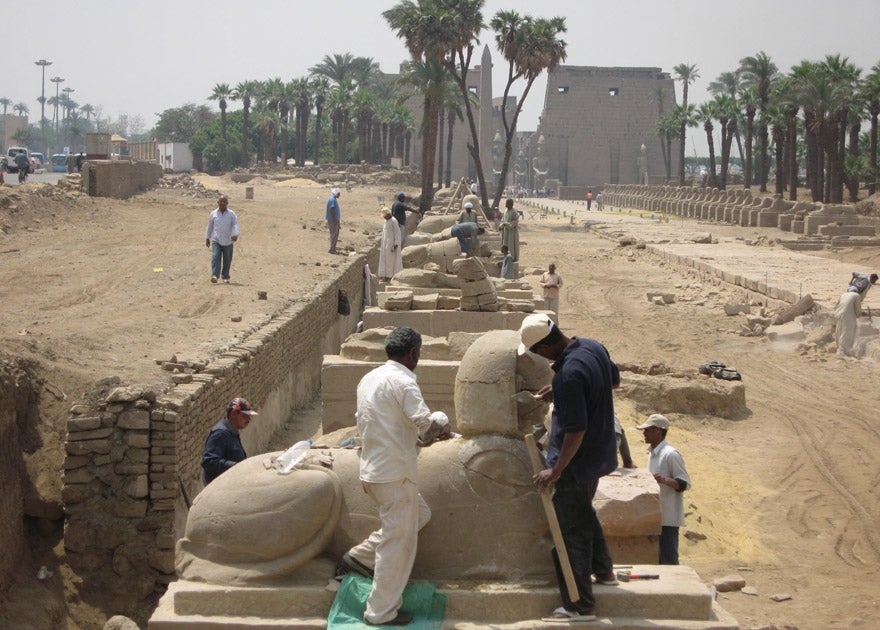Your support helps us to tell the story
From reproductive rights to climate change to Big Tech, The Independent is on the ground when the story is developing. Whether it's investigating the financials of Elon Musk's pro-Trump PAC or producing our latest documentary, 'The A Word', which shines a light on the American women fighting for reproductive rights, we know how important it is to parse out the facts from the messaging.
At such a critical moment in US history, we need reporters on the ground. Your donation allows us to keep sending journalists to speak to both sides of the story.
The Independent is trusted by Americans across the entire political spectrum. And unlike many other quality news outlets, we choose not to lock Americans out of our reporting and analysis with paywalls. We believe quality journalism should be available to everyone, paid for by those who can afford it.
Your support makes all the difference.Archaeologists working at the Avenue of Sphinxes in Luxor, Egypt, have uncovered the remains of a fifth century Coptic church and a Nilometer, a structure used to measure the level of the Nile during floods.
According to a statement released by Egypt’s Supreme Council of Antiquities (SCA), the remains of the church were found on the second of five sections of the ancient religious path leading to the Karnak temple.
The church was built with limestone blocks originally belonging to the Ptolemaic and Roman temples that once stretched along the Avenue. The blocks are well preserved, with many of them bearing depictions of Ptolemaic and Roman kings offering sacrifices to ancient Egyptian gods.
Also this week, in the avenue's fourth section, the Egyptian team discovered the remains of a Nilometer, which contained a collection of New Kingdom clay vessels. Constructed out of sandstone, the Nilometer is a cylindrical structure seven metres in diameter and has spiral steps which used to descend into the Nile. During periods of flooding it was used for measuring the increase in water level of the river.
The development and restoration works at the Avenue of Sphinxes aim to revive this 2700-metres-long ancient route connecting the Luxor and Karnak temples. It is thought that originally no less than 1350 sphinxes were guarding the path.
Other recent discoveries along the Avenue are foundation stones decorated with depictions of Pharaoh Amenhotep III, the chapel of 21st dynasty priest Min-Kheber-Re and a number of fragmented sphinxes that are now being restored in order to be reinstated along the Avenue.
Plans to Recreate the Avenue of Sphinxes

Join our commenting forum
Join thought-provoking conversations, follow other Independent readers and see their replies
Comments